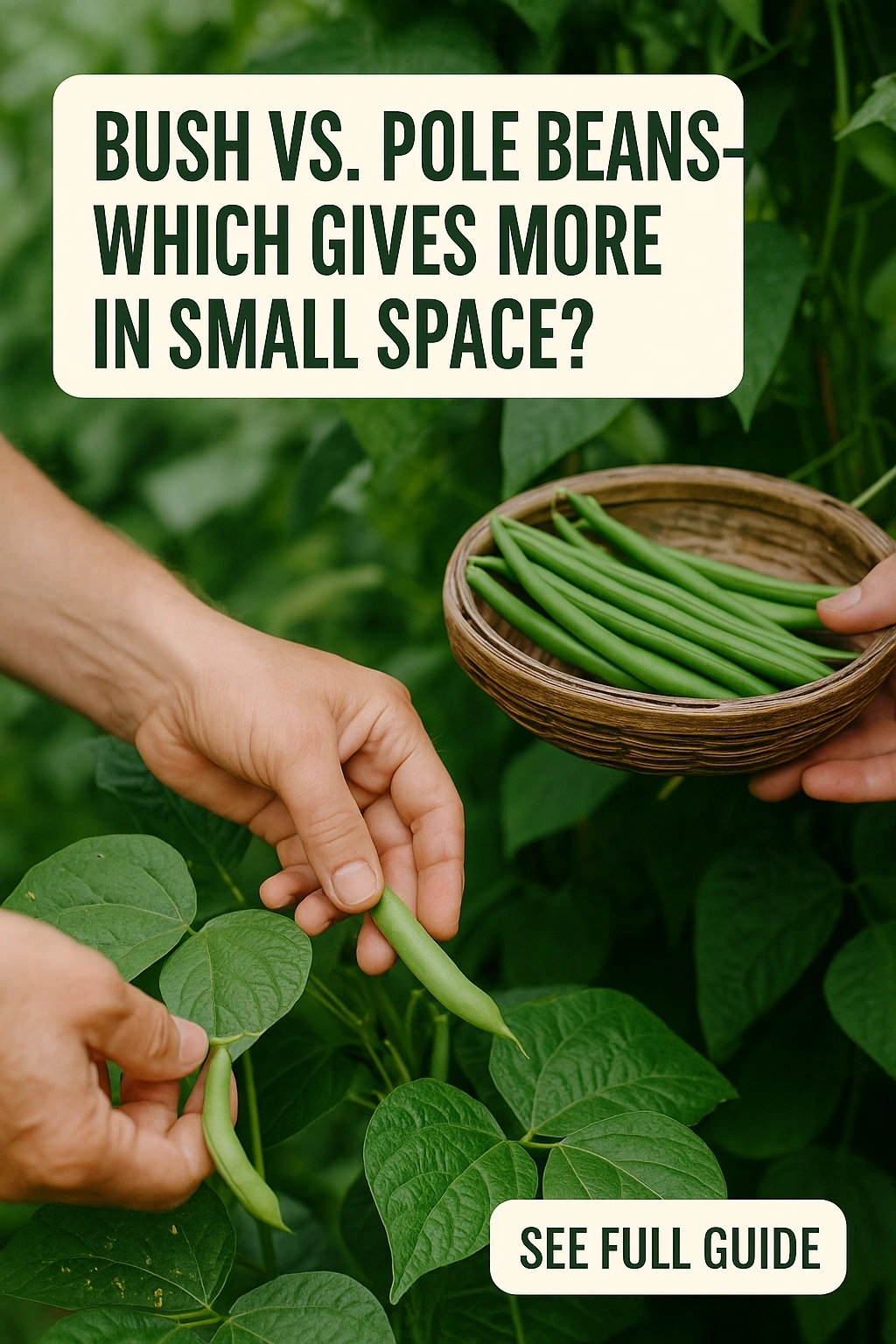
If you’re looking to maximize your garden yield in a limited space, understanding the differences between bush beans and pole beans is crucial. These two types of beans offer distinct growth habits, productivity levels, and culinary uses. This article will explore their characteristics, advantages, and disadvantages, helping you make an informed decision for your small garden.
Understanding Bush Beans
Bush beans are compact and self-supporting, typically growing between 1 to 2 feet tall. They are ideal for small gardens or container gardening due to their low growth habit. Bush beans tend to be early producers, often yielding a harvest within 50 to 60 days after planting. Their short stature means they require less support and can be planted closer together, making them an excellent choice for maximizing small spaces.
Pros and Cons of Bush Beans
- Pros:
- Quick harvest time
- Requires minimal support
- Can be planted densely
- Cons:
- Generally lower overall yield compared to pole beans
- Harvest period is shorter, with most beans maturing around the same time
Exploring Pole Beans
Pole beans, in contrast, are climbing varieties that can grow 6 to 10 feet tall or more. They require support structures like trellises, fences, or stakes, allowing them to take advantage of vertical space. Pole beans typically have a longer harvesting period, producing beans over several weeks, which can result in a higher overall yield in a small garden.
Advantages and Disadvantages of Pole Beans
- Pros:
- Higher overall yield due to continuous harvesting
- Utilizes vertical space, freeing up ground for other plants
- Longer harvest period extends the growing season
- Cons:
- Requires more space for trellising and support
- Longer time to initial harvest, usually 60 to 90 days
- More susceptible to wind damage if not properly supported
Comparative Yields in Small Spaces
When considering which bean type yields more in a small space, several factors come into play. Bush beans produce a quicker yield but tend to stop producing after a short period. In contrast, pole beans may take longer to establish but often produce beans over a more extended season. This ongoing production can lead to a greater total yield, especially in a small area where vertical growth is possible.
Planting Strategies for Maximum Yield
To optimize yields, consider the following strategies:
- Plant bush beans in blocks to maximize space and sunlight exposure.
- Use trellises for pole beans to save ground space and enhance air circulation.
- Stagger planting times for both types to ensure a continuous harvest throughout the growing season.
Ideal Growing Conditions for Both Types
Regardless of the type of bean chosen, both bush and pole beans thrive in similar growing conditions. They prefer well-drained soil rich in organic matter, and they require full sun for optimal growth. Regular watering is essential, but care should be taken to avoid waterlogging, which can lead to root rot.
Soil Preparation and Maintenance Tips
- Incorporate compost or well-rotted manure into the soil before planting.
- Monitor soil moisture levels to maintain consistent watering without saturation.
- Consider crop rotation and planting beans after heavy feeders to help maintain soil fertility.
Best Culinary Uses for Bush and Pole Beans
Both bush and pole beans are versatile in the kitchen. Bush beans, being more uniform in size and shape, are excellent for canning and freezing. They tend to have a slightly firmer texture, making them ideal for stir-fries and sautéing. Pole beans, on the other hand, can be harvested at various stages, allowing for use in salads or as fresh snacks when picked young.
Cooking and Preservation Techniques
- Freezing: Blanch beans before freezing to preserve color and texture.
- Canning: Use pressure canning for long-term storage of both bush and pole beans.
- Fresh Uses: Use young pole beans in salads, and bush beans in hearty dishes.
FAQs
Which beans are easier to grow in a small space?
Bush beans are generally easier to grow in small spaces due to their compact size and minimal support requirements. They can be planted closely together and are quicker to produce a harvest.
Do pole beans produce more than bush beans?
Yes, pole beans often have a higher overall yield because they continue to produce beans over a longer period, while bush beans tend to have a shorter harvest window.
Can I grow both bush and pole beans together?
Yes, you can grow both types together. Just ensure that pole beans are planted on a trellis or support structure to prevent them from overshadowing bush beans.
What is the best time to plant bush and pole beans?
Both types of beans should be planted after the last frost date when the soil temperature reaches at least 60°F. This is usually in late spring in most climates.
How often should I water my bean plants?
Beans typically require about an inch of water per week. It’s important to water deeply and less frequently to encourage strong root development while avoiding waterlogging.
